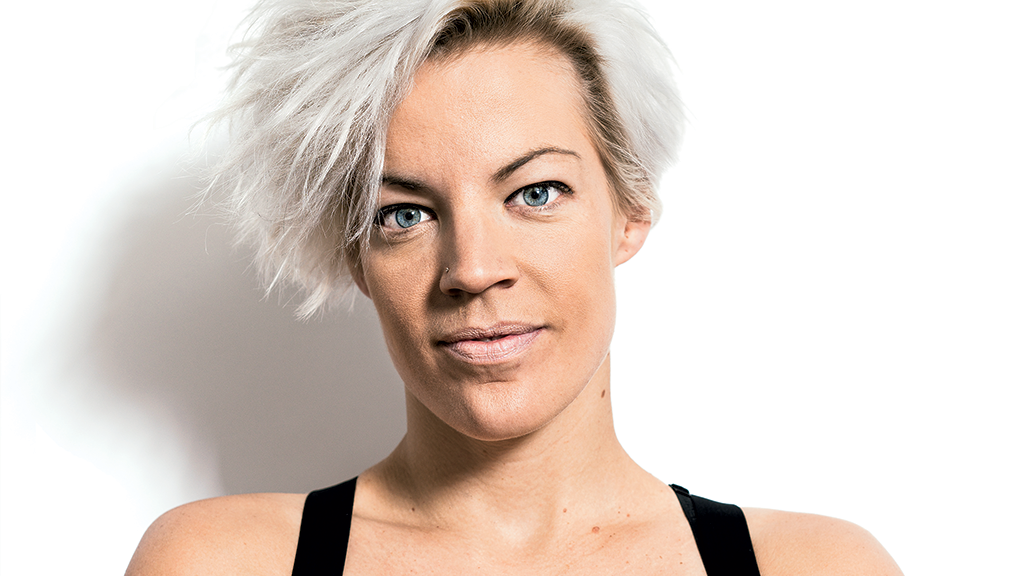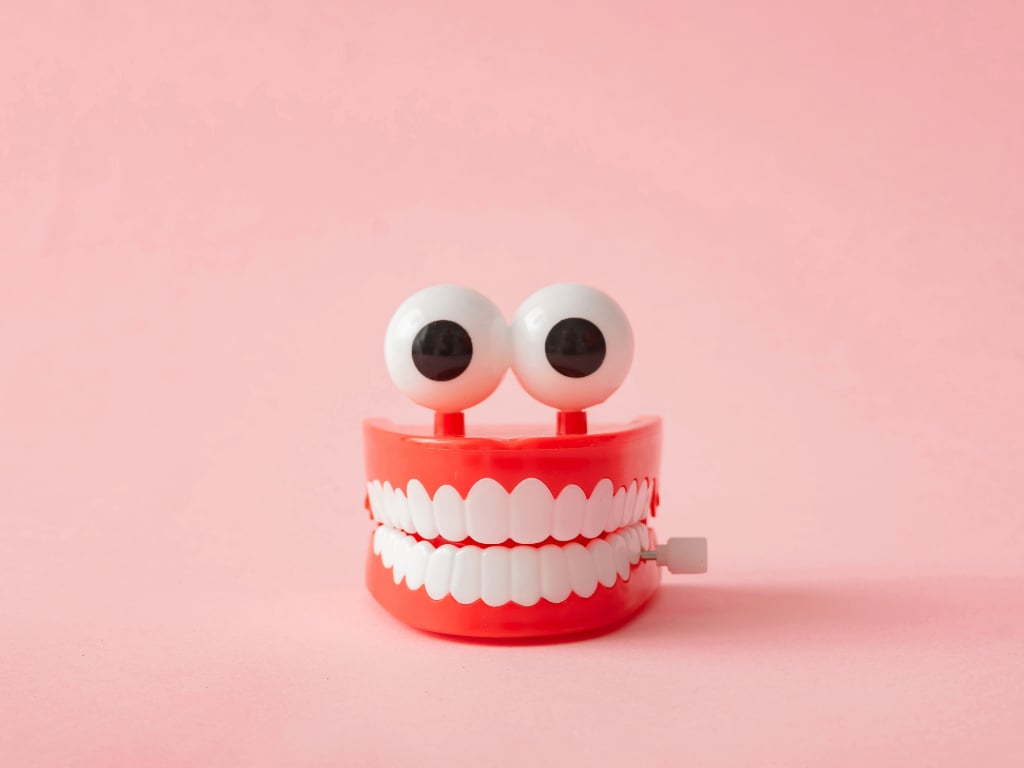
Allergist Valerie Augello Carregal’s storefront practice is next to a dry cleaner on Pennsylvania Avenue in Foggy Bottom—which is to say, it doesn’t look like much from the outside. But inside, the space feels more health spa than doctor’s office. Carregal’s patients are greeted by cool slate floors, plush leather seating, and museum-quality artwork. The exam rooms are cordoned off by frosted-glass panels, which let in natural light from the waiting room.
“It’s about the whole experience,” says Carregal, who’s seen more than 5,000 patients since opening her practice in 2005. “I want people to feel relaxed and calm as soon as they walk in the door.” Which makes sense, since a trip to the allergist usually means enduring a syringe prick or two.
With spring in the air—and all the stuffy noses, watery eyes, and congested lungs that go along with it—we chatted with Carregal about what causes allergies, how to deal with them, and the allergy myths she’d like to lay to rest.
What are the causes of springtime allergies?
The springtime-allergy culprit is tree pollen. Typically at the end of February through mid-March, we see the early tree pollinators, such as cedar, juniper, and cypress. With the decline of that peak, other tree pollens rise, bringing four times more pollen in the air. By April, the biggest nuisance is oak pollen, which comprises over 70 percent of the tree pollen in later spring. We used to be able to predict to the week when the first surge of pollen would hit, but right now with global warming and the instability of the weather it’s harder to nail down.
Can a person experience allergies in the spring but not the fall and vice-versa?
Absolutely. There are some people who just have spring allergies and asthma that’s set off by the tree pollen. There are others who are only ragweed-sensitive, so they need to be on medication only in the fall. When we do the skin testing—that’s the mainstay diagnostic—we place small drops of allergen onto the skin of your forearm. Then using a little pricking tool, we prick through the fluid and touch the skin. After about 15 minutes, if you’re allergic to something, we’ll see mini-reactions—such as swelling, redness, and itchiness—at the prick points. I think it’s the best test because patients can actually see what’s happening and begin to understand the correlation to the symptomatic parts of their bodies, be it their eyes, nose, skin, or chest.
What’s actually going on inside a person’s body when they have allergies?
The allergic-tissue cell is called the mast cell. They’re located in many organ systems of the body, including the nose, skin, gastrointestinal tract, heart, and lungs. To give you a sense of how many there are, a person has about approximately two billion lining the surface of the eye. In people with allergic tendencies, the immune system detects the pollen, and the body processes it into a protein. This protein stimulates antibody-producing cells, which then produce another protein called Immunoglobin E—or IgE for short. Once you produce IgE, it goes into the tissues and sits on the mast cells. The next time the pollen, or allergen, enters the body, it attaches to the IgE, causing the mast cells to burst and release hundreds of chemicals; one is called histamine. Histamine causes allergy symptoms, such as itchy eyes or runny nose. Cytokines, or signaling molecules, are also released. These bring out other immune cells, cause the production of thick mucus, and stimulate blood vessels to dilate—all contributing to inflammation. The nasal passages then feel stuffed up. If there is inflammation in the lungs, a person can have a hard time breathing.
Can the symptoms be more severe than just watery eyes and a runny nose?
Yes. Symptoms and their severity can differ by patient. It just depends on what’s budding at the time and what’s releasing. Sometimes there can be such tremendous swelling in the nose that it leads to migraine headaches or sinus infections. If there’s excessive mucus production in the lungs, it can lead to coughing and difficulty breathing, symptoms of asthma and bronchitis.
When people move to DC, they often complain that they develop allergies they never had before. Is that fact or myth?
DC has beautiful trees, some from around the world, so it’s feasible that there are non-native trees a person might never have been exposed to before. It’s possible that after a few seasons of being residing here, your body might make the IgE to a new allergen. Then the IgE settles on the mast cell, just waiting to react the following year. So while you might not have symptoms this year, next year you could be in trouble.
What are some allergy myths?
Lots of people think they’re allergic to pollen from the cherry blossoms, but most flowering trees don’t have pollen grains that travel very far. When the cherry blossoms come out, it happens to occur around the same time that trees such as maple, elm, poplar, and birch release their pollen grains, which get dispersed in the wind. And then right after the cherry blossoms, the oak and mulberry release pollen. So you should think of the cherry blossoms as a clue that allergy season’s around the corner, but not as the actual cause.
What’s the difference between over-the-counter allergy treatments and prescription drugs?
Over-the-counter allergy medications include sedating and non-sedating antihistamines which assist with runny-and-itchy-type symptoms. Both start working within 15 minutes or so, but they vary in the sedation side effect—in other words, some make you feel sleepier than others. The problem is that most non-sedating antihistamines are somewhat weaker and less effective. You can also get medicated nasal sprays over the counter, but I advise patients not use those. They contain decongestants which give immediate relief for a day or two because they squeeze the blood vessels tightly. But after a few days, the vessels just can’t squeeze anymore. When they release, they dilate even more than before, causing overt nasal congestion and blockage.
Most prescription allergy drugs, including topically placed nasal sprays and lung inhalers, aim to decrease the inflammatory response. These medications are placed into the affected organs and actually block the chemicals that are coming out of the mast cells, which cause symptoms. If you use prescription drugs, make sure to see your allergist a little earlier, maybe a week or two before allergy season is in full swing. While some drugs begin working in just a few minutes, others need a few days or up to a week to reach full effectiveness.
Are there any natural remedies you recommend?
The most natural thing to do is saltwater nasal irrigation using a neti pot or spray bottle. The water source is important. Any water out of the tap or even a filter needs to be boiled for four minutes to kill any living organisms that might be in there. Then you can put it in the fridge and use it later. Another option is to buy distilled water, which is free of organisms and ready to use. The key to nasal irrigation is filling up your whole nasal vault, sucking the solution back into your mouth, and then spitting it out. If you just go in one nostril and out the other, you’re missing a lot of mucus that builds up in the back of your throat, which is the primary cause of post-nasal drip.
For eye allergies, try carrying around a bottle of natural tears. When you go into a building after being outside, flood your eyes with natural tears to remove the pollen that’s sitting there. You should also remove pollen from your hair, eyelashes, and eyebrow
s by rinsing them when you get home. And remember to keep your windows shut so you don’t let the pollen indoors.
Subscribe to Washingtonian
Follow Well+Being on Twitter
More >> Health | Top Doctors | Well+Being Blog


















